
Here on Wired To Hunt, Andy May owns the idea of assembling this great list of DIY hunter profiles. However, Andy neglected to include himself.
It was my idea, not Andy’s, to make him part of the DIY series. This is the main reason I respect him. Andy stays humble. Without prompting, Andy wouldn’t have written a self-profile in a million years. Don’t mistake his clear statements for any trace of arrogance. That decisiveness is part of his skill-set as a master hunter.
Andy happens to be the most lethal DIY hunter I have ever seen. I have watched him for years methodically hunt down mature bucks on high pressure Michigan properties. Andy usually also tags several top-end deer in multiple other states each season, often on trips that are only two or three days in length.
Far too often in the world of hunting for mature bucks I hear variants of the question “What is the secret to success?” For those who really need to know, the answer is provided plainly in these answers. Also, there was just too much good information for one article so I split this into two. Here is Andy May. – Joe Elsinger
***
Q: How did you learn to hunt?
A: Ironically I did not start hunting until I was 18. I had a couple of cousins in my family that hunted but nobody else hunted all that much or was even into the outdoors. To be honest my journey into hunting began with archery. I’ve always been fascinated by bows. When I was a kid I remember watching Robin Hood with Kevin Costner and then trying to make a wooden bow out of my mother’s broom stick. I never had a father around much so I didn’t really get into serious archery until I was 17 and saved up for my first bow.
I purchased a Bear bow and some cheap aluminum arrows. I was immediately addicted. I shot constantly and became quite good. In my very first year shooting with a bow I started winning archery leagues and competitions at our local ranges. I was just naturally pretty good and consequently people started telling me that I should hunt. When I was 18 I took that first step. I hunted with a couple of my cousins on property they had permission to hunt. The rest, I guess you could say, is history. I became completely obsessed with bow hunting. Like most things I tend to become overly obsessed with things I’m passionate about and have a drive to constantly improve.
I think not having a mentor early on in my hunting career may have helped me actually. I just learned as I went and made a ton of mistakes along the way. I was never taught any of the poor hunting practices that a lot of my friends were taught by their fathers and grandfathers. As I fumbled around the woods I was very mindful of my mistakes and basically started taking the steps to eliminate them.
Over time I started becoming more and more successful and started knocking down good bucks in my home state. I started to develop my own style or I guess I should stay a combination of many styles to the point where I started gaining confidence that I could get onto good bucks in most any areas. I am as eager to learn today as I was when I was 18, so I love talking to hunters of various skill levels. I think there is something to learn from every hunter and every hunt. One of the things I love about bow hunting is that I don’t think you can ever really master it and the learning only stops when your effort stops or you become to close minded, which often happens to hunters when they become routinely successful.
Q: Why do you hunt now?
A: I think I hunt for multiple reasons. I love venison and other game meat, eat it year-round, and don’t really ever need to purchase meat from the store. I love the feeling of going out and getting my own food and knowing where it’s coming from.
I also hunt for the challenge of it. While hunting itself is difficult enough, chasing mature bucks with a bow can be really quite difficult depending on your hunting area.
I love the fact that I’m really no match for a pressured mature buck. I have to do everything right while they just need to make one small mistake for me to have even a chance of getting it done. They just simply win the majority of the time. That level of challenge is intoxicating and I love how these amazing animals humble me every year.
Lastly, I just love hunting with friends. Some of my very best friends are also my hunting buddies and it just really brings us closer. I love strategizing with them, going out hunting trips with them, and just being a part of their successes. That has become one of the things I enjoy most about hunting.
I have filmed most of my hunts the last several years and while reviewing and editing 2016 footage I said a comment, without really thinking about it, that really helped me come to understand what it is I seek out in regard to hunting. I said “the size of a buck doesn’t matter but the size of the experience does.” I’ll admit more so in the middle of my hunting career I worried more about the size of the buck’s antlers. I got a little caught up in antler size and found myself being disappointed when a buck I shot didn’t score over 140 inches or something. That’s no way to be in my opinion.
Now I crave adventure, new experiences and meaningful hunts. It could be a special hunt with a friend or it could be a particular old buck that has given you the slip a few times and created some cool history. It could be an epic spot and stalk hunt with your bow. For me, at this point in my career it’s about the adventure and the challenge. I want as many of those memories in my mind when it’s all said and done as possible. It’s not about how many bucks I can get on my wall, it’s about how many of those experiences/challenges/memories I can fit into this aging brain before the end. That’s the cool thing about hunting… it can be different for every guy. Find out what you want to get out of hunting, what makes you happy, and how you want to challenge yourself and go for it. It certainly evolves over time, or at least it has for me.
Q: Looking back, what have been some major turning points in your hunting career?
A: There have been lots of turning points in my hunting career but I will highlight a few. It’s kind of strange, but even from the very beginning, I had a knack for tagging some of the bigger bucks in the area. I think because I didn’t know any better I tended to be more of an aggressive type hunter. Everybody now talks about the importance of being mobile when hunting mature bucks and I completely agree.
I remember being mobile very early on in my career because it’s just what made sense to me. I remember sitting in a hedgerow in southern Michigan and watching a big buck emerge from a swamp into this low spot in an overgrown field. It made complete sense to me even early on that I needed to relocate my stand to where I observed the movement. I remember hanging and hunting with those cheap metal hang on stands with the chain links, and being completely stressed out hanging them because they were so loud. I became quite good at observing movement and then moving in for the kill on the following day or the next time similar conditions presented themselves.
Eventually, as I progressed, I started figuring out where some of these mature bucks spent their time during daylight and started setting up as close as I could to these areas. When I started focusing in on more of these bedding/core areas my success really started to take off and I started becoming quite consistent. You hear about hunting buck bedding areas a lot now, but back in the early years I never read much about it and although I didn’t always find exact buck beds I tended to naturally gravitate towards bedding areas because I was constantly scouting for sign. Big tracks, big droppings, big rubs, thick cover, etc naturally led me to the areas where big bucks live and spend most of their time during daylight.
It wasn’t until I found the Hunting Beast online forum when a lot of my unanswered questions regarding buck bedding and behavior became answered.
Come to find out there were many guys that hunted similar. I feel like that sort of filled in a few of the missing pieces of a puzzle that I was trying to figure out. Dan Infalt (of The Hunting Beast) certainly was one of the more influential people in my hunting career. I wish I could say it was my dad or grandpa but unfortunately I was self-taught or taught from other hunters that I’ve met throughout my career and mostly just from plain old trial and error. I let their stories of success and failures teach me and I’ve always sought out guys that are consistently successful in tough areas and learned as much as I could from them.
I mentioned scouting a few sentences back. Scouting without a doubt is the main reason for my success. Unless you dump a whole lot of money into buying your own land or hunting with expensive outfitters there really is no other way. You have to scout, you have to know your hunting grounds intimately and specifically where mature bucks live and how/when they use the area you’re hunting. Hunting extreme pressured areas throws an even bigger challenge at you as you need to know where other hunters are and their impact on the deer. The cool thing is you can never learn it all, so it’s really up to you how far you want to take it. You can always learn more when it comes to mature bucks or learning an area. The more you put into it the more you will get out of it plain and simple.
Everybody talks about what is the best style for hunting big bucks. There are lots of different styles and techniques but I like to let the buck tell me which style is required. That might mean an aggressive bed hunt early season. It might mean sitting observation stands for two weeks and moving in on a travel route when it starts getting used in daylight. It might mean there is a buck living on adjacent private property and waiting until pre rut/rut to hunt him. Patience and aggressiveness each have their place when pursuing mature bucks. It’s vital to know when to implement each style.
I believe I have shot 56 bucks in my hunting career. Roughly 80% of those were killed on the very first sit in that given location. It became apparent many years ago that the first set in a given location is my absolute best chance at success. A turning point for me was realizing that and waiting until the absolute best time to go into a particular set up/location. It takes discipline and patience but if you can withstand the urge and hunt your best spots at the absolutely best timeframe and best conditions, your chance of success is actually quite high in comparison.
Another turning point for me was several years back. I have always been a pretty good archer but I was always a trigger puncher. I could pinwheel targets at long-distances time and time again but I found my shots on deer to be less than ideal. I’ve lost my fair share of deer due to target panic or what a lot of people call buck fever. I believe that buck fever is just another form of target panic (or execution breakdown when pressure is high). Yes, big bucks get us excited and nervous but that can translate into target panic issues and form/execution breakdown when the pressure is really high.
It wasn’t until I learned proper shooting form and developing an unanticipated release that I started feeling really confident when shooting at big bucks. Now I’m able to shoot at deer with no panic at all. I’m able to run a perfect shot execution time and time again with no anticipation or panic. It’s still shooting at a wild animal, so things can happen, but this was a huge turning point for me. I could talk for hours on this topic alone.
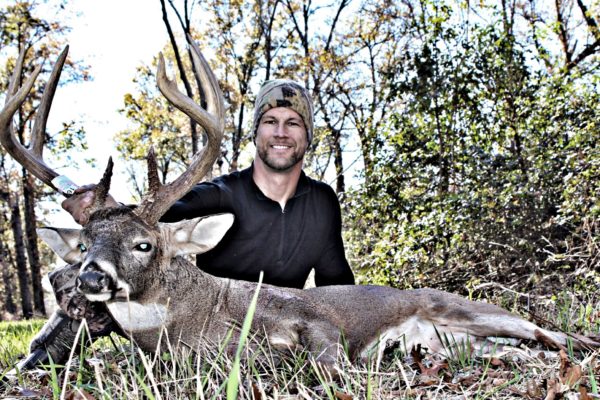
A: I appreciate the comment. It’s funny you say that because mature bucks sure do make me feel like a bumbling idiot sometimes. I still make a lot of mistakes. I’m certainly nothing special other than I try really hard, I’m extremely committed, and stubborn. Being unsuccessful simply isn’t an option for me. I devote enough time into my archery, scouting, and preparation that it would be extremely unlikely to not have at least some success each year. If I slacked on any of that I’m sure my success would drop some.
Like I mentioned earlier, I think the more you put into it, the more you get out of it. What’s cool though is with experience and over time you make less mistakes which makes success easier and easier to come by. Look at any super successful hunter and there will be some point in their life time where they devoted nearly everything to hunting. There will be a time in their life that they were scouting several days each week all year long, hunting nearly every day of the season and this is where the groundwork and foundation is laid. Without that level of experience and commitment you simply don’t have the knowledge, instinct, and woodsmanship to be successful on multiple mature deer year in and year out. I was that way for nearly 20 years. I scouted 5 to 6 days per week all year long and hunted my tail off. Most of my kills in the beginning were from sheer stubbornness and unwillingness to quit. That eventually transformed into more skillful kills. Now with a young family and young children hunting isn’t prioritized as high as it once was, although it is still extremely important to me.
I went off on a bit of a tangent there but to answer your question it doesn’t go to my head because it’s simply not that big of deal. There are tons of guys that shoot big bucks every year. Just like there are tons of scratch golfers that put in a lot of time to that. I’m not a numbers guy either and I certainly don’t think I’m a better hunter than anyone on here just because I shot a few nice bucks in a season. Hunting is just what I love to do and I simply try to be the best I can be at it.
Q: If you could give every brand-new deer hunter some advice right now, what would it be?
A: I would explain to them that hunting is different for each person. You do not to have to be some chest pounding big buck slayer to have a good time hunting and that they should never let anyone make them feel bad about what they want to hunt or the size of the buck that they shoot. Don’t hunt to impress other people. Hunt for yourself. It’s gotten pretty ridiculous out there. I like to chase big bucks just as much as anybody but that doesn’t mean that’s what hunting should be about for everybody else. Choose your own path, and have fun with it. If the young hunter came up to me and asked about mature bucks specifically I would emphasize the importance of scouting. Specifically, scouting for the type of deer you are after more than actually hunting. I would explain the importance of scouting with a purpose and that if you’re after a certain caliber of deer you have to find where that caliber of deer lives. I would also explain how their best chance at being consistently successful on mature bucks is hunting near where they spend the majority of their time in daylight and that relates back to what I mentioned earlier about hunting close to buck bedding.
I would encourage them to not be afraid to make mistakes. Push the envelope and be aggressive. That’s the only way you can really learn. Any successful hunter has made a million mistakes. That’s precisely why they are so good at what they do now. If you talk to most of the successful big buck hunters, they will tell you that it’s the little things that end up making a difference. You have to go through the trials and tribulations and make a ton of mistakes to figure out what works. That’s where experience, making mistakes and obsessing about those mistakes to make sure they never happen again comes into play.
Q: If you could change one thing about modern deer hunting, what would it be?
A: There are many things that I would change. I definitely don’t like the direction deer hunting is going in regards to making it easier. We have crossbows that group like a rifle at 100 yards. We have guys hunting out of mini-houses to stay “comfy.” We have cell cameras that tell us where a buck is in real time. We have rangefinders on our bow sights. We have scent machines we bring to the woods that supposedly take away the deer’s number one defense! Really? What fun is hunting an animal when you take away his number one defense? Or knowing where a buck is in real time by some cell camera.
I’m as guilty as anyone as I use a decked-out compound bow and I use trail cameras. I’d be completely fine if they banned all of it or at least put restrictions on some of it. At some point we’re going to have to put limits on certain weapons. Anything that continuously makes these animals too easy to kill is just not a direction that I think we should be going. It’s actually creating lazy hunters that kill more. Flat out hard work is becoming less and less of a prerequisite to achieving consistent success in hunting.
Q: Let’s talk tactics. You have a target buck identified going into the season in your home state of Michigan and many other hunters are after him too. What is your typical process for figuring out how to get close and seal the deal on a specific deer?
A: Not trying to sound arrogant at all, but I would assume from the beginning that I’m going to have a bit more of an edge than your average hunter in knowing mature buck tendencies and how to predict/react to them simply because of my experience.
I’ll also be under the assumption that I know the area in question much more intimately. If there is another guy out there that is going to work harder than me and scout more than me and prepare more than me then he deserves that buck. More power to him, but my commitment in scouting for that buck, hunting for that buck and all around preparation is going to be very solid. If I know multiple other hunters are after a certain buck, I would definitely attempt to figure out where most of those guys are hunting. Your average hunter is not going to be a mobile type hunter and he will probably have one or two stands. I will locate those and relay that information to where I know that buck prefers to bed. If my preparation is sufficient I will likely know one or more of his preferred bedding locations.
Depending on the hunting pressure I will form a strategy. It may be hunting the buck early near his preferred bedding area. If the pressure is so high the buck is not moving much where I can hunt him, I may rely more on historical data and when that buck becomes more active in certain areas. It may be a situation where a buck tends to become more active in late October around doe bedding areas. Or it may be a situation where a particular buck shows a weakness late season when extreme cold temperatures or snow arrives. I’ve had several mature bucks only show during the first week or two of November and only at mid-day (which would require midday hunts in that time period.) Depending on the information that I can obtain or already know, that’s how I will address that hunt.
Q: You can take only three things with you on a typical pre-rut or rut bow hunt, besides your weapon and the clothes on your back. What are they?
A: 1.) Mobile tree set up – Most likely my lone wolf and sticks or maybe my homemade tree sling. Either of these two can get into virtually any tree.
2.) My binoculars – These not only keep me sane for those all day sits but they have also been responsible for several of my kills. The big buck I shot last year in Illinois was directly related to the use of my binoculars. I caught movement 150 yards through the timber. I only saw a flash of movement and it appeared to be an antlerless deer at first glance. I quickly brought my glass up to my eyes and noticed a huge, heavy set of antlers. A grunt and a snort wheeze and a minute later that buck was lying dead 40 yards from the base of my tree. I’ve also spotted bucks bedded out of range and put stalks on them. I am positive I have gained opportunities by constantly surveying my surrounding and picking up distant movement that I otherwise would have missed.
3.) I’m torn here between my rangefinder or my milkweed – I’m half target archer/half hunter. I like to be pinpoint accurate and know the exact distance of my shots. I’m terrible at guesstimating yardage and I feel very confident out to extended ranges so a rangefinder does help me significantly. With that being said milkweed is invaluable when it comes to hunting. I picked up milkweed use from Dan Infalt (thanks Dan!). Milkweed flows beautifully along the air currents and lets you know exactly what your wind is doing not only near your stand but also a good distance away from your location. It really shows you what you can and can’t get away with in regards to your wind and scent.
Q: You like to make very short one to three-day out-of-state hunting trips and you have had very impressive success doing it. Describe your typical routine for these mini-trips and the biggest factors you see for success on a short schedule.
A: This one is simple but it takes time. It relates back to my answer to question 4. The full blow commitment to mature buck hunting and years and years of experience is a prerequisite. I’m not talking about stacking up nice deer from a primo family farm. I’m talking about experience in many different areas and many different scenarios. This is where the groundwork is laid for creating woodsmanship and instinct on how to hunt and find mature deer in any setting.
Without that level of experience, you simply don’t have enough mistakes and successes under your belt to develop the skill that those super experienced hunters have. That’s why there are so many hunters out there that just cannot grasp how some guys do it. They don’t understand the level of commitment and the amount of time that was devoted to lay the groundwork.
My out-of-state trips are typically successful for a few reasons. One, I learn these areas intimately. This takes years and years of committing to a certain area to gain this knowledge. Overtime you learn not only the areas within where mature bucks tend to live and move but you also learn the timeframe of when those areas really pick up in regards to mature buck activity. By stacking perfect timing with high percentage spots your odds of success skyrocket.
Another reason that I’m routinely successful on these trips is that I’m not super picky. When I only have two to four days to hunt, I will typically shoot a nice three-year-old or a 130-inch class buck if the shot presents itself. Sometimes I pass, sometimes I shoot. Depends on how I feel in that moment. Many times I’m able to shoot something bigger but I’m just as happy with a nice buck on such a short timeframe to hunt. I don’t get any vacation days so I’m typically limited to weekends for traveling out of state. I would recommend picking a few areas and then learning them the best you can. Over time high percentage spots will reveal themselves if you are attentive enough. You’ll learn what you can and can’t get away with as far as access and wind/scent and you’ll also notice trends on when the prime time frame is to be there.
For example, I have a spot in Ohio that is very good the first few days of the season. If there is a good buck around the first few days of the season I have a very good shot at killing him. Hunt the same area during the rut and I would be very surprised if you see a single deer. Our Illinois area we have hunted mid-October through mid-November and all in between for 3-5 day stretches. Without a doubt the timeframe from November 9 through the 13th seems to be the best days for that particular area as far as seeing truly mature bucks on their feet. Go a week earlier and you see many 2-3 year olds but not as many truly mature bucks.
I mean this as no disrespect to anyone that hunts your typical big buck states. A big reason that I am successful on those out-of-state trips is because there are just so many more mature bucks then where I typically hunt in Michigan and the pressure is substantially less.
My odds of shooting a big buck increase exponentially the second I cross the Michigan border. I understand that that’s probably a hard concept for many hunters to grasp, but I have the experience hunting many other states to back it up. I’m not just blowing smoke. Truly mature bucks are just really hard to come by here unless you have substantial amount of ground that you control the pressure on. From my experience, bucks in the extremely high pressured areas exhibit substantially different behaviors then bucks in not so pressured areas. They each present their own set of challenges though.
So in short I have quite a few places that I can travel to at certain times of year and have a very high chance of success. With that being said I love hunting new areas and figuring them out. It really rejuvenates my hunting spirit and keeps my skills sharp. I try to hunt new areas often to keep that challenge there.
Stay tuned next week for PART 2 of Andy May’s DIY profile where he tells the story of a giant buck that he shot in a high-pressure area in Michigan last fall. And for more from Andy in the meantime, listen to his interview on the Wired To Hunt Podcast from July, 2017.

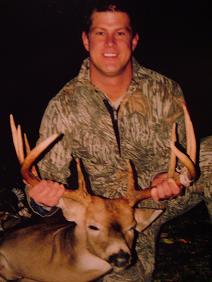
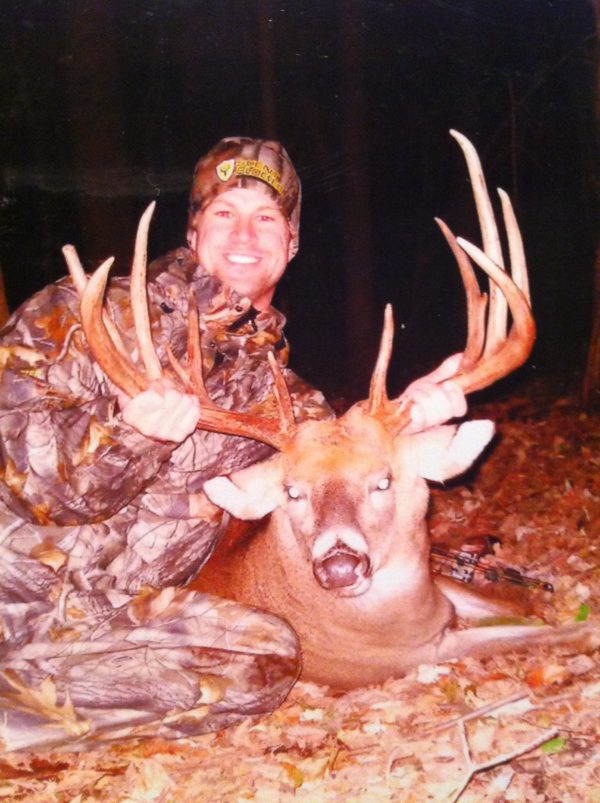
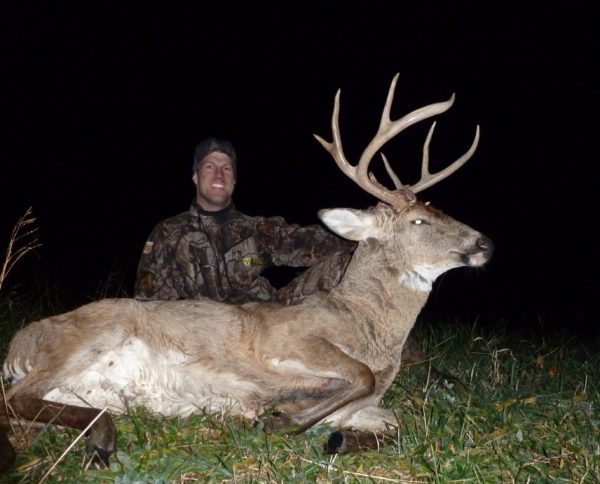
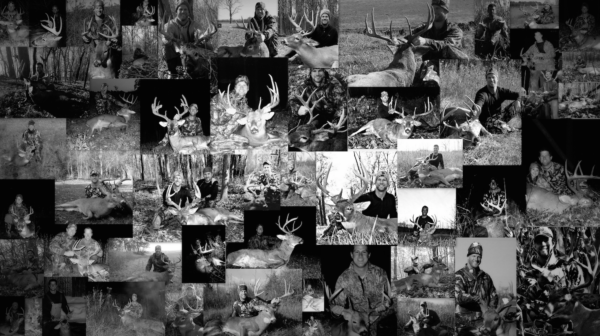



Conversation